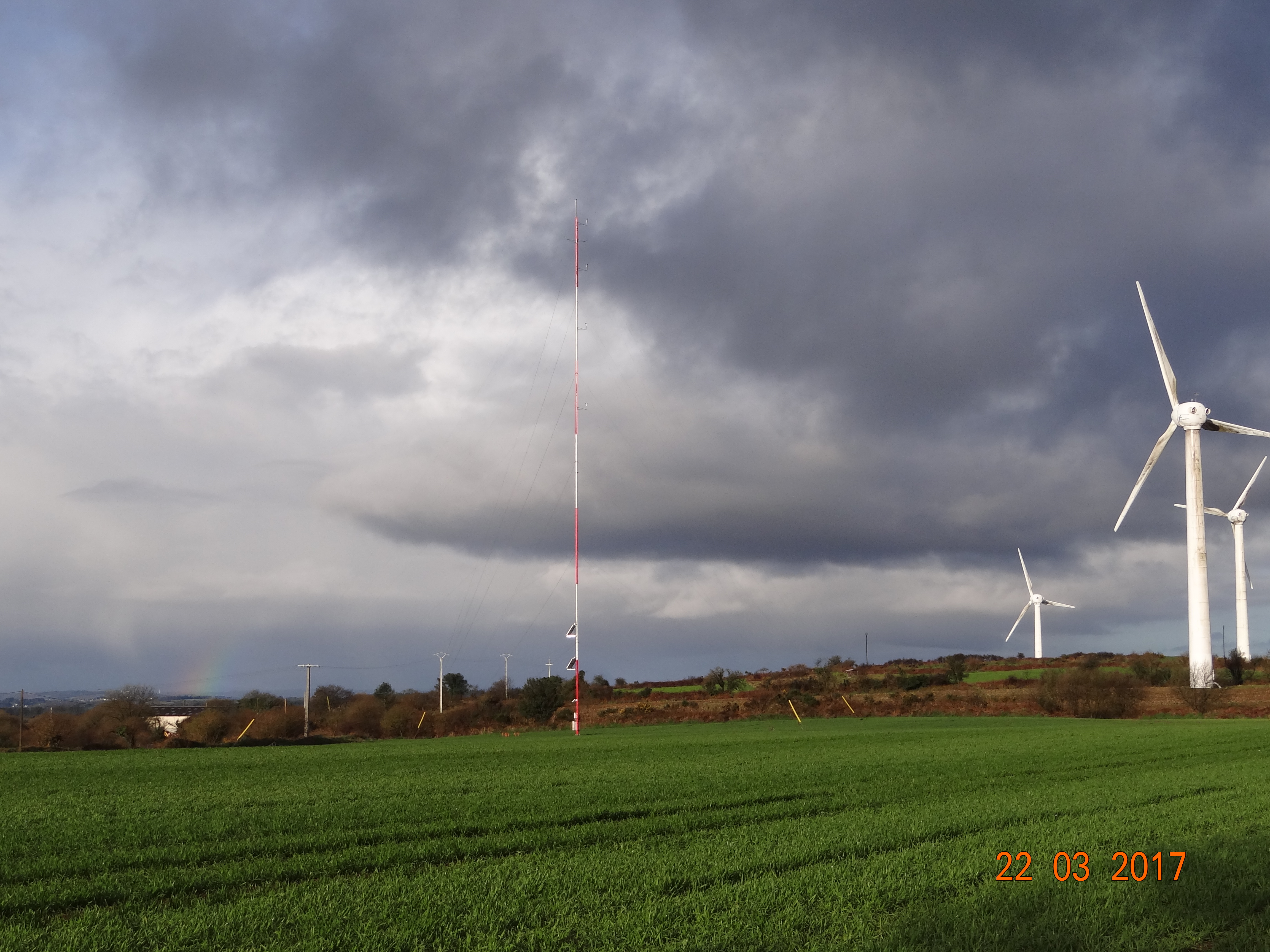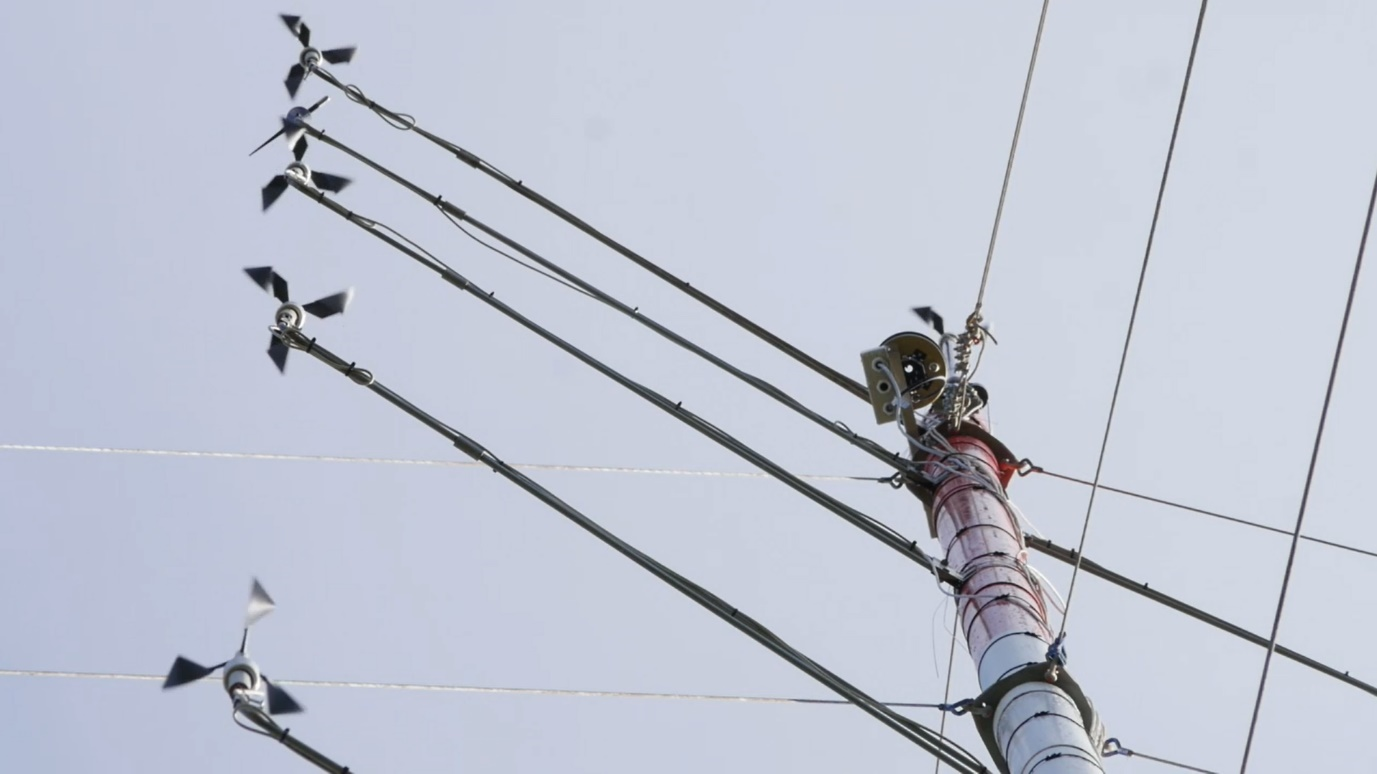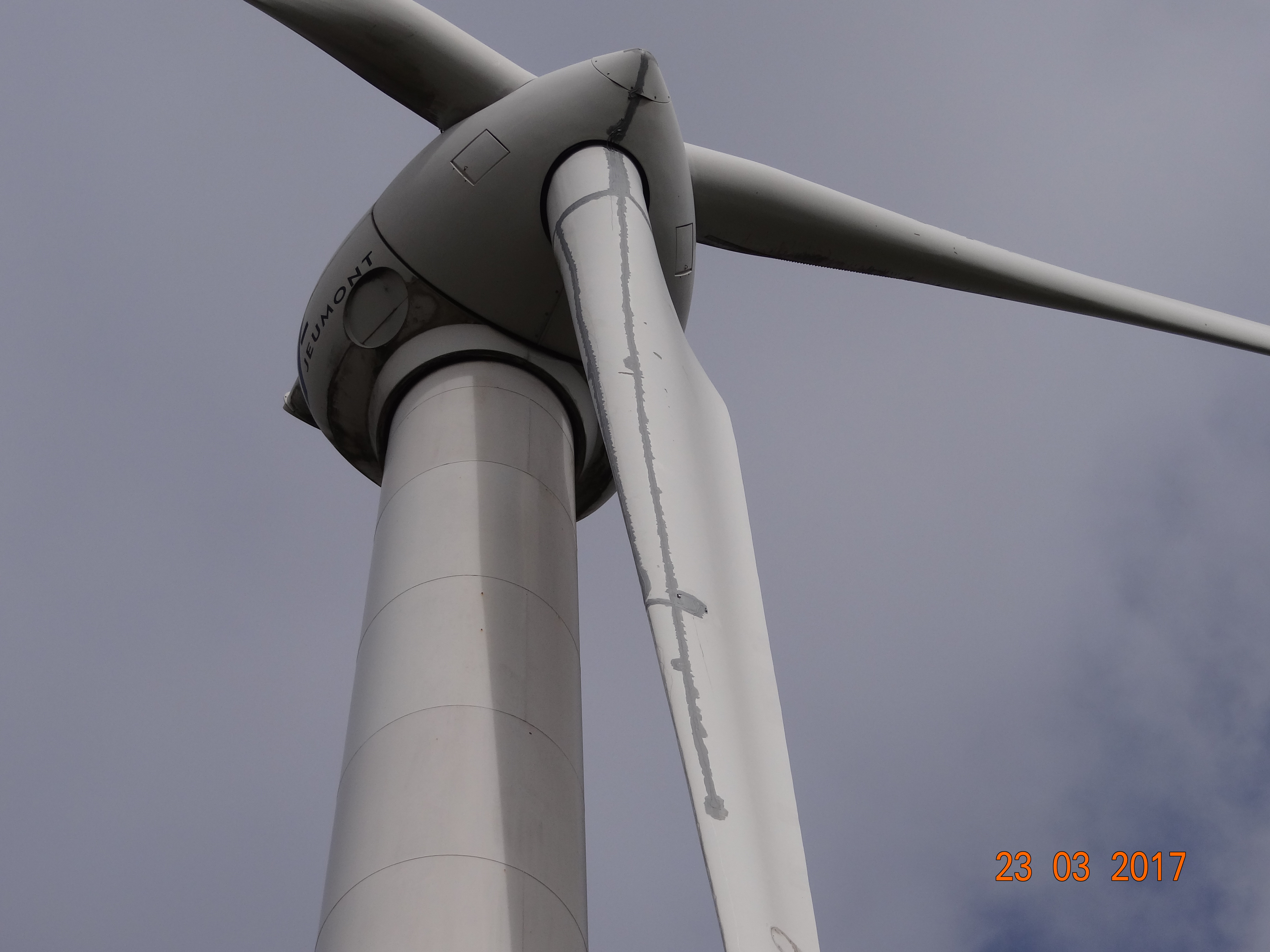Section: Highlights of the Year
Highlights of the Year
Memphis team of Inria and VALOREM are both involved in the european project AeroGust (Aeroelastic gust modelling). One of the task aims to investigate the behaviour of wind turbine blades submitted to gust using incompressible flow model and Octree grids. An other task is to carry on an experimental work on a wind turbine. Interests will be first to have real data and use it to better understand the effects of wind and more precisely of gusts, on wind blades. A second interest is to use experimental data to calibrate our numerical schemes in the high-fidelity CFD code.
The measurement of the wind was considered as the most important data to be obtained from the very start of the project. Indeed, this data will be used as a key input for the numerical simulations. This is needed to represent the wind as it arrives at the wind turbine. Then, wind turbine data collection aims to observe the aero-elastic behaviour of wind blades. So, the measurement of blade deformations will allow to check the structural beam model of the blade and to observe its structural behaviour. To observe the aerodynamic load on the wind blade, the measurement of pressure of air on the blade is of significant interest.
A meteorological mast has so been installed in March 2017 in Brittany (France) to measure wind on-site. In figure 5 can be seen a photograph of the whole mast after its installation. Figure 6 contains a picture focused on the sensors of the met mast which are wind vanes for the direction and anemometers for the velocity.
For the instrumentation of the wind blade, the setup consists of 4 optical fibres along the blade. Each fibre has 4 sensors (pressure or strain gauges ) and also temperature sensors at different lengths in order to calibrate the other sensors with respect to temperature. 10 strain gauges and 6 pressure sensors have so been installed on a wind blade located near the meteorological mast (in a way that in the main wind direction, the met mast and the wind turbine are aligned). In figure 7, the 2 lines of sensors going along the pressure side and the leading edge of the wind blade can be seen.
Work is now in progress with the experimental data in order to identify different gust conditions in the field and to analyse the effects on the blade deformations. One of the outcomes will be then to compute simulations with our high-fidelity numerical tool developed with VALOREM. This comparison will allow us to calibrate the numerical schemes thanks to real test data.





